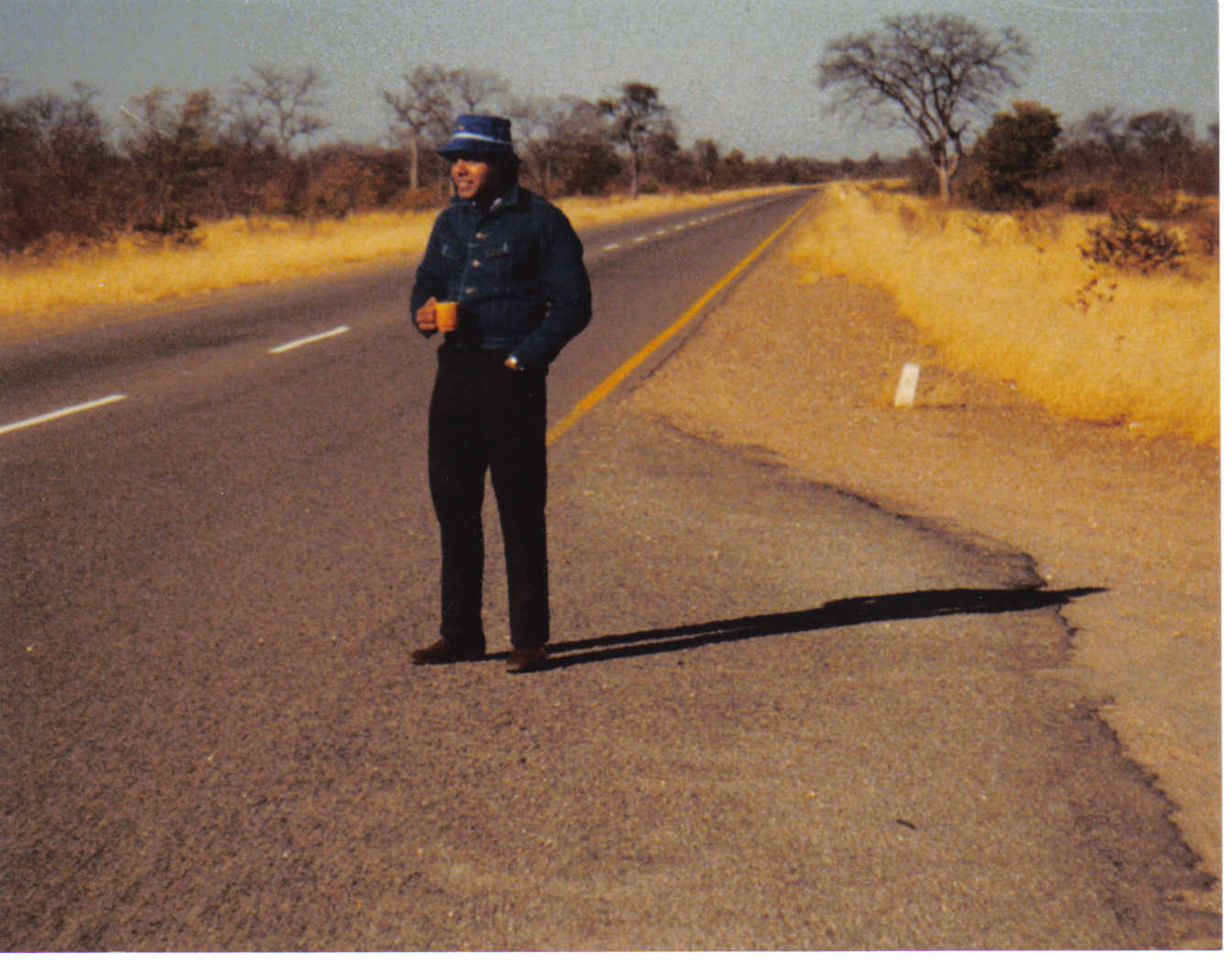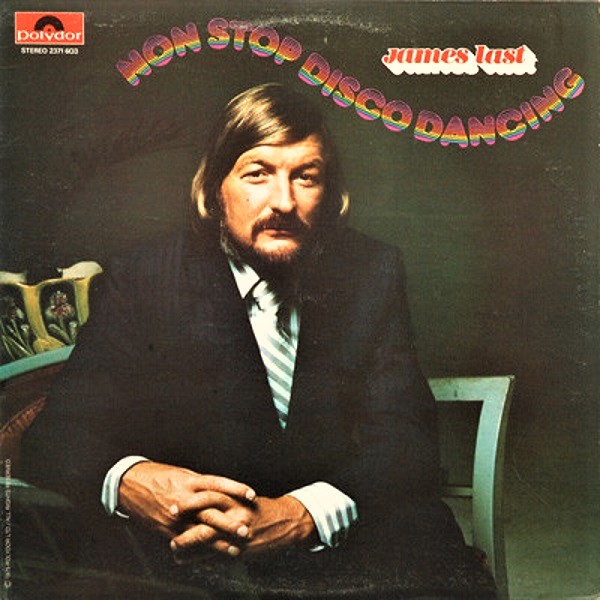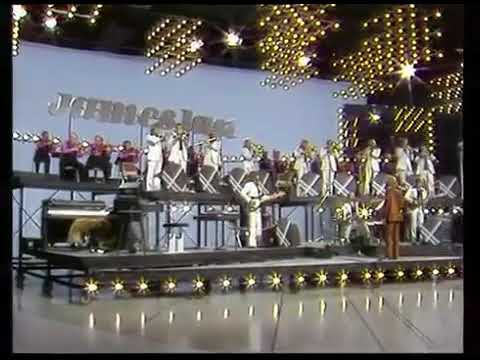Classic Cars, Movies, Music, and Other Stuff ...
In the world of Big Bands, James Last ruled. In losing “Hansi,” seven years ago, we lost an extraordinary music composer and band leader. He had been called “King of Corn” who specialized in “Elevator Music.” Ever humble, he agreed. To me, he was much more. He was a musical experience.


Immediately after the 1972 Olympic Games in Munich, we had a surge of German TV programming. Likely related to the live broadcast of the Games, it included science, medicine, German football, and music. The music included “Music Box,” and “Starparade.” The former played European music videos, and “Starparade” had live musical guests.
This was my first exposure to non-English pop music, and it was fun. But what fascinated me was the resident orchestra on Starparade. A large sign on the show said “James Last.” And they were outstanding. Great quality, upbeat music, and there, among them, stood James Last.
It was a big band, but it was of the likes I had never seen before.
To a teenager, big bands, or orchestras, are generally “square” and boring. But James Last’s band was different. It was cool and energetic, and James Last, with his long hair and beard, was hip to the scene. That in itself was impressive for the young me. It resembled a rock band surrounded by backup musicians.

And when they played, wow! This where it really came together. While other big bands played the music on cue, James Last’s band “performed” it – very well indeed. I was hooked.
YouTube / New Last
As a regular on Starparade, we got to see a lot of James Last. The range of music they played on the show was awesome. But it was not just light pop stuff. They had a string section too, which was phenomenal. So began my lifelong love for James Last’s music.
Hans Last or “Hansi” was born in Bremen on 17th April 1929. By 10, he was learning music and could play simple tunes. When WW II broke out, he ran messages for the air defence units around Bremen. Rejected by his initial music tutor, Hansi found more success with the second one. He soon specialized in double bass, piano, and tuba after joining the German Wehrmacht’s Būckeburg Military Music School.
After the War, he joined the Radio Bremen Dance Orchestra. Later, he was part of a six-piece jazz group, the Last-Becker Ensemble which included Hansi’s brothers Walter, and Robert Last. Hans was voted best bassist in Germany 1950-52. Soon he was arranging music for Polydor Records, European radio stations, and famous artists.
By 1960, Hansi released albums in the US which he called “Classics Up To Date.” These were classic pieces updated with some lighter touches by him. These remained popular right through the 1980s.
YouTube / aryanto 123456
In 1965, Hans made the first of his popular “Non-Stop Dancing” series of albums. These included sampled pieces of hit songs accompanied by vocals and cheers. With these, Hansi’s popularity took off around the world.
During this period, Polydor changed Hans’s name to James, as a marketing strategy. Hans wasn’t even consulted, and only discovered the change on his mail. He was initially upset, but then thought if this helps in his popularity, so be it. And that’s how we got to know the artist as James Last.
From the mid-60s onwards, James Last quickly becomes a household name across Europe and as far away as Asia, Australia, and South Africa. Which is when I got to know him.
He released around 30 Non-Stop Dancing albums, with his instantly recognizable style of beat. James Last also ventured into albums featuring music of other European countries and by 1971 had sold a million records.
YouTube / New Last
But purists still felt his music was more “Elevator Music.” It didn’t deter fans, as he sold over a 100 million records worldwide. When questioned about it, James agreed that his music was indeed “corn.” At his height, his music was as popular as other big recording artists of the time.
Once hooked on his music, I became a fan of James Last right through the late 70s. He introduced, in me, an appreciation for the magic of orchestra music and music from around the world, not the least German music too – among them, “Griechischer Wein.” Click Image To Play/Stop
Source: James Last / Non-Stop Disco Dancing (1976)
In fact, at an age when one doesn’t think outside of Rock, I suddenly found myself appreciating the wide variety of stuff James Last was producing. Remember his strings? Yes, I fell in love with listening to strings after observing his orchestra’s performances on Starparade. One of my favorites: “Salome” – a perfect example of the orchestra’s variation.
YouTube / Joseph Noise (Young, bearded Derek Watkins on the horn)
By the mid-seventies, anything James Last did was gold. He was likely at the right place, at the right time – and peaking at the right time too.
But time marches on, and my tastes in music evolved further, as James Last faded into the background for me. But he never vanished. Over the 80s I still accumulated some of his albums on music cassettes. Occasionally I played them, and the magic always returned. Here’s the beautiful “Morgens um Sieben.”
YouTube / New Last
New Wave music, Giorgio Moroder, and new musical styles meant that James Last was facing tough competition on my playlists. Living in the US didn’t help much either as James Last did not make as much of a breakthrough here. By the 90s, James Last faded further into memory.
YouTube / New Last
Then in the early 2000s, for the first time, I saw him on American television. Still energetic, he looked older. His music was still fun, his style had evolved. But it had been a while and the world was definitely a different place. While still enjoying him, I had moved on too far. I missed the younger man I saw on German TV so long ago; but that’s life I guess.
I even won a prize in a James Last competition including a CD and booklet on his life which I cherish. Then, out of the blue in 2015, I was disappointed to hear of his passing in Florida. So ended the life of one of my all-time favorites from the music world.
I’m no music expert, but I think James Last’s music style peaked at a time when it would be most appreciated. He straddled the world of the big band era, and the emerging rock genre. He also had a great ear for adapting – apparent with his later use of techno beats, albeit conservatively.
The talent he accumulated in his band, and how he coordinated them into producing such beautiful music was magical. Even the unversed, have been touch by the likes of “The Lonely Shepherd,” a James Last / Gheorghe Zamfir co-production, featured in “Kill Bill: Volume 1” (2003).
YouTube / Tarkan Pektaş
With the currently trend of techno-beat, we’ve likely moved away from appreciating organic individual music talent which James Last demonstrated. A genre of music that hopefully will return – after people tire of the overly precise, computerized electronic beats.
“Men at Work” – One of The Most Underrated Bands?
“Diamond Life” With The Unique Sade Adu
The Flying Lizards Were Ahead of Their Time